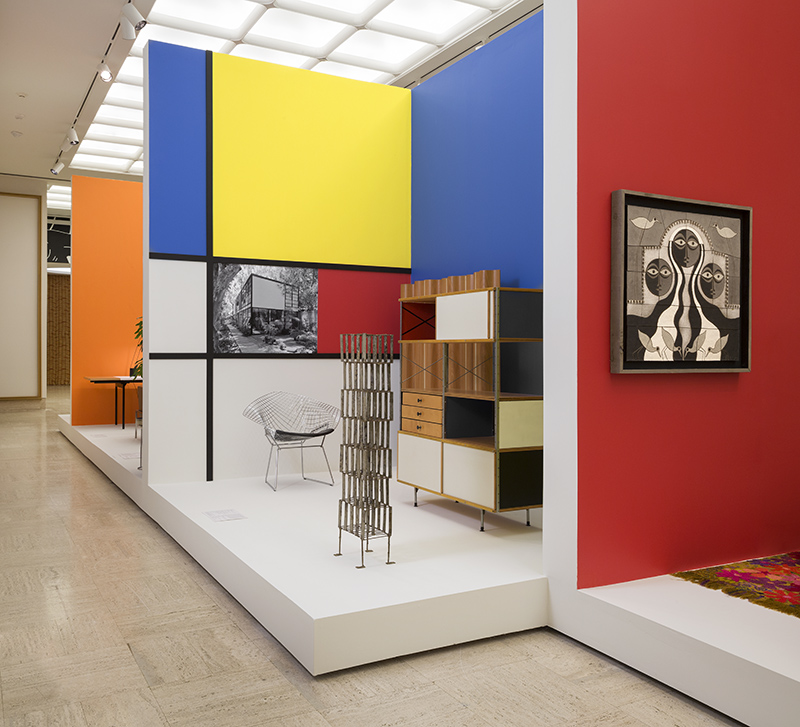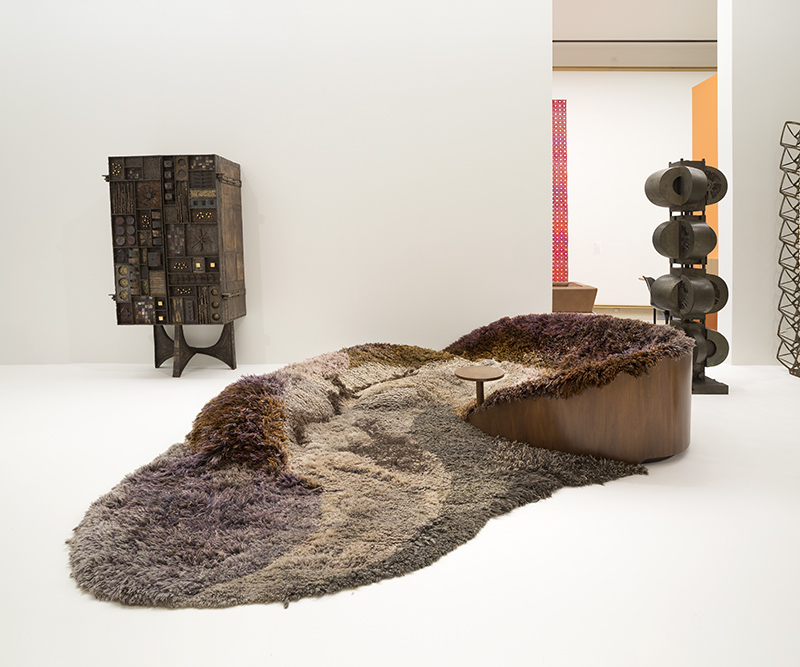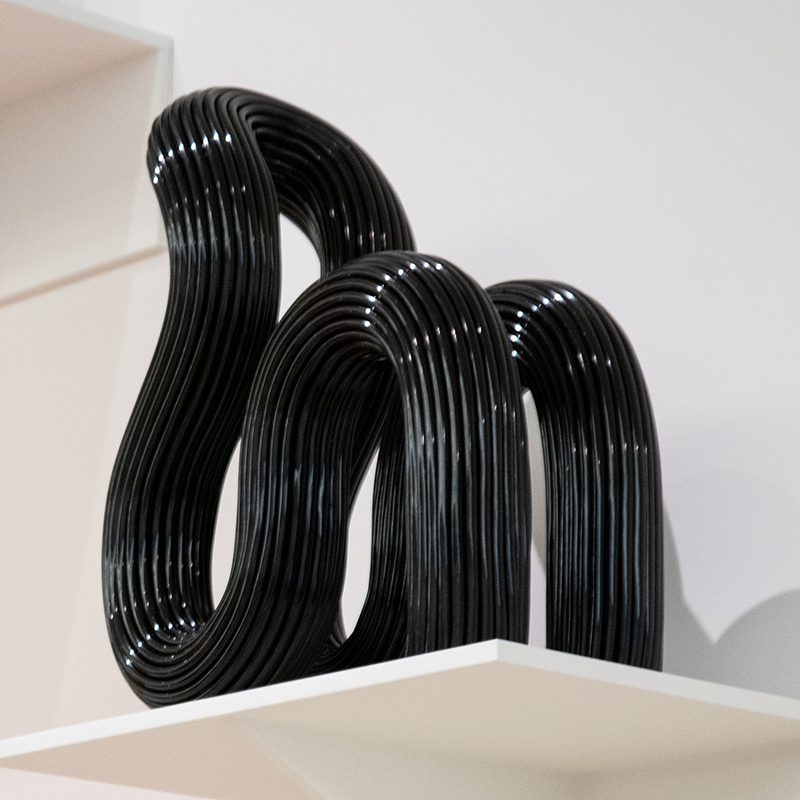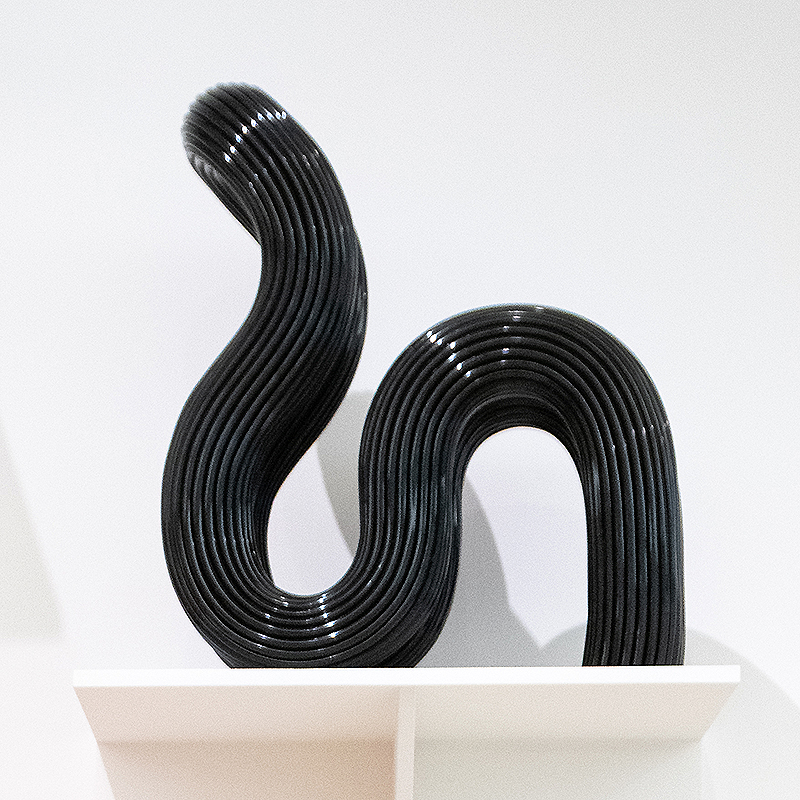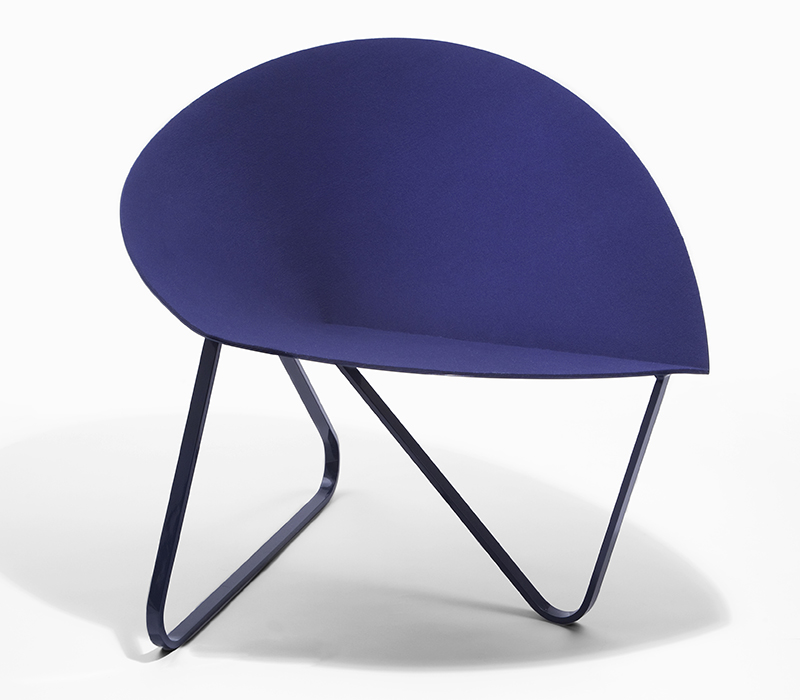With Eyes Opened: A Diverse Retrospective on Cranbrook’s Legacy
by John-Duane Kingsley
Stepping into Cranbrook Art Museum’s retrospective exhibit, With Eyes Opened: Cranbrook Academy of Art Since 1932, provided both the familiar in the icons of Cranbrook’s rich history while juxtaposing the presence of historically underrepresented minority voices that touched upon critical issues of identity and representation within the arts.
For those unfamiliar with Cranbrook’s history, it is an educational community and campus founded in 1932 by arts patron and philanthropist George Gough Booth. The Cranbrook Academy of Art opened as the Bauhaus closed amid the encroaching opression of Nazi Germany. Cranbrook arose as the American equivalent to the Bauhaus and offered an utopian vision predicated on independent interdisciplinary experimentation and on critique guided by practicing artists, architects and designers rather than professors. The campus was designed by architect Eliel Saarinen who became the academy’s first president. Saarinen and subsequent president Zoltan Sepeshy presided over Cranbrook’s Golden Age from 1937 through 1954. During this era, Cranbrook’s interdisciplinary curriculum produced several icons of Mid-Century design like Harry Bertoia, Florence Knoll, and Ray Eames who designed across multiple media.
The interdisciplinary nature of Cranbrook’s curriculum and artistic legacy is embodied within the exhibit design, which is divided into the following sections: Architecture of the Interior, Sculpture, Object Islands (varying forms of craft media), Salon Abstraction (paintings, prints, and photographs), Paper Trail (printmaking and graphic design), the Menagerie (two and three-dimensional renderings of animals), and the Portrait Gallery.
Starting with the Architecture of the Interior gallery, the curatorial intent is directly stated: “we undertook this project to increase our own awareness of the academy’s rich legacy with a goal of expanding our history to include more diverse voices – in particular women, LGBTQIA+, and artists of color.”
The rectangular gallery was arranged with a central elongated block subdivided into vignettes of iconic furnishings. The left side is broken up roomscapes that feature groupings enclosed within three walls to provide the sense and scale of these objects within an interior setting, for example the collection shown below that features Harry Bertoia’s Diamond Chair, a molded plywood folding screen by Charles and Ray Eames, and an Eames Storage Unit. The walls are treated in color blocks akin to a Mondrian painting, akin to the Eames storage units that used color blocks to designate the different storage compartments. While kept intentionally simple to enhance the sculptural quality of the furniture, these spaces could have been enhanced by appropriately scaled paintings or graphic works on paper to invoke the feeling of a domestic interior while also showcasing additional works from the collection.
The alternate side of the gallery was dedicated to installations of more overtly sculptural pieces whose scale, technical complexity, and presence required more expansive spaces. You can see this in the grouping illustrated below of Forged Front Cabinet with Base by Paul Evans juxtaposed with Urban Jupena’s Crevice (Smithsonian Rug).
Although the central displays were dominated by Cranbrook icons, the side wall entitled “Cranbrook and the Chair” showcased an eclectic array of 20 chairs that synthesized the work of famous designers alongside emerging artists who reflect greater gender, sexuality, and ethnic diversity. Of these designers, Armenian-American Ara Thorose emerges as a strong voice for his interpretation of queerness into the form of a chair. Thorose’s distinctive style presents varying iterations in the form of a line as seen in his 7M Chair. According to Thorose, “a bent cylinder embodies queerness. It veers into the margin, a space both unencumbered and unprotected by the boundaries that serve only what keeps it in line.” The dimensions of the tubular lines are determined by the circumference of Thorose’s thigh, thus physically manifesting the queer body of the artist into the scale of the work.
Nina Cho represents a similar reflection of her cultural identity in Curved Chair. Cho’s style offers a cultural and biographical interpretation of furniture as she explores her identity as Korean-American. Born in San Francisco and raised in Seoul, South Korea, Cho attended Hong-lk University where she studied woodworking. Her inspiration for Curved Chair was the Korean expression “it is modest but not humble, and impressive but not extravagant.” This manifests in her reductive approach to the chair’s form. Cho removed a pie-shaped section from a circle to form the curved back and connected the edges with the chair seat, thereby forming a complete shell.
These works emerge as the most salient examples of identity centered design within this gallery, but the theme of visibility and representation for underrepresented ethnic, sexual, and gender artists was consistently featured throughout the gallery. In the case of Thorose and Cho, Cranbrook included extensive wall text to provide a voice for the message of their works.
To enhance the interpretive breadth of the exhibit, Cranbrook also created a substantive catalog that delivers an institutional history of the academy’s evolution and includes brief biographies of significant graduates. The text is intended not to be a strict representation of the exhibit, but to expand the breadth of interpretation beyond what the exhibit could contain. Museum director Andrew Blauvelt was the lead author for the institutional history chapters, and Cranbrook staff, historians, artists, and critics contributed the biographical entries. With its breadth and diversity of artistic voices, the text serves as an excellent resource on design history.
John-Duane Kingsley is a contributing writer for The Decorative Arts Trust Bulletin. You can read more of his work at www.dandycraft.org.
About The Decorative Arts Trust Bulletin
Formerly known as the "blog,” the Bulletin features new research and scholarship, travelogues, book reviews, and museum and gallery exhibitions. The Bulletin complements The Magazine of the Decorative Arts Trust, our biannual members publication.








